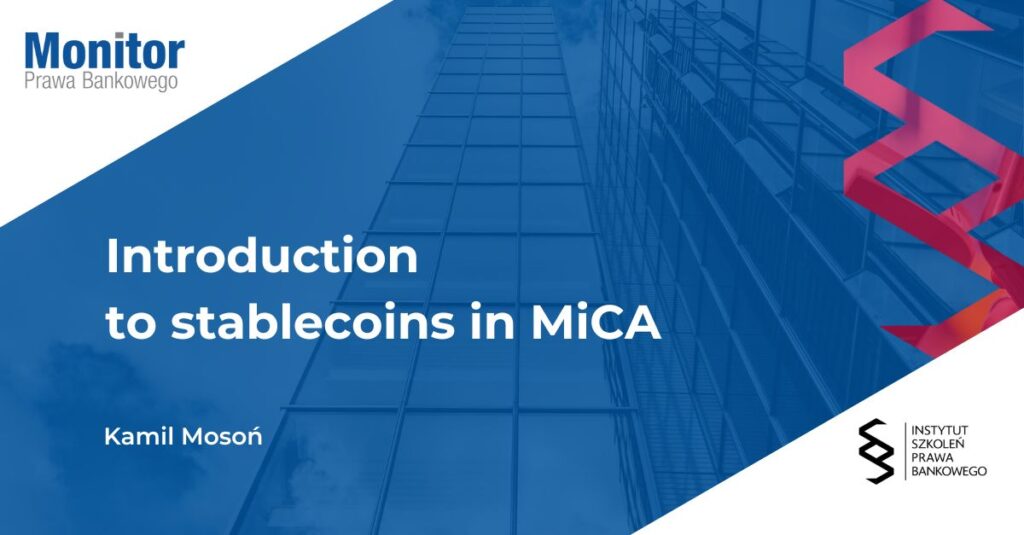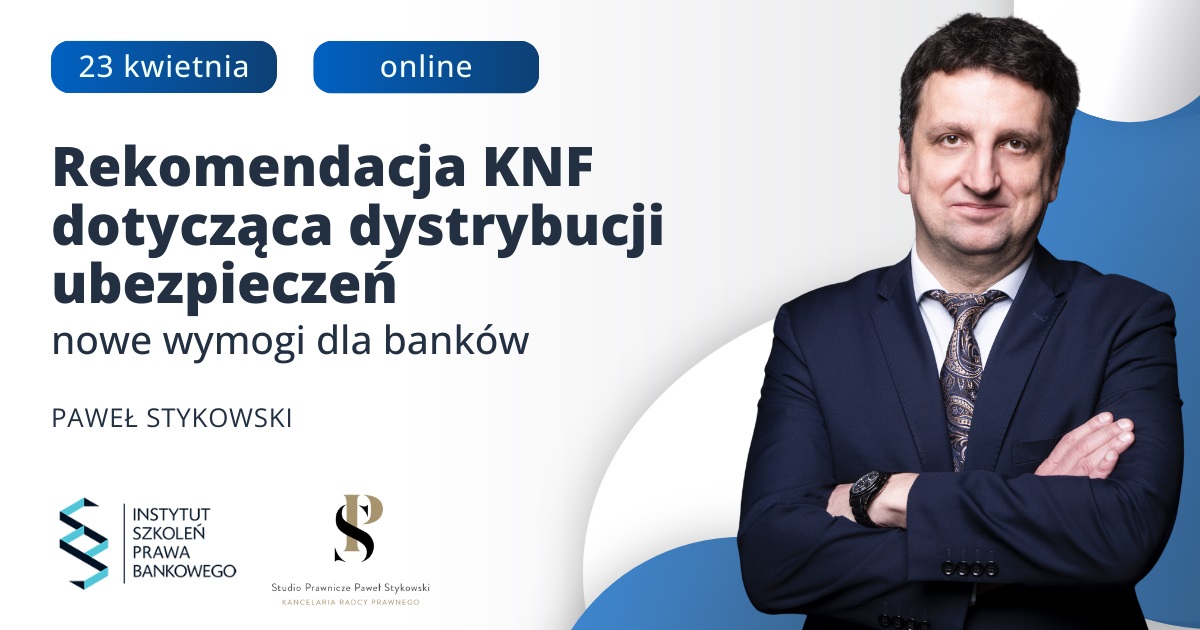Introduction to stablecoins in MiCA
Monitor Prawa Bankowego 2024/11 Listopad

On 9 June 2023, in the Official Journal of the European Union, a regulation was published that can aspire to the title of “Constitution for crypto-assets” — MiCA[1]. This pivotal legal act governs various aspects of activities related to crypto-assets, which, prior to MiCA, lacked comprehensive regulation at the European Union level.
When reasons for the adoption of MiCA are discussed among lawyers, consumer protection is often indicated as one of the main causes. Such a perspective is well-supported as MiCA was drawn up with interests of consumers in mind[2]. However, equally crucial is the response to risks posed by stablecoins. A stablecoin is a type of crypto-asset that is pegged to another asset (usually a fiat currency) in such a way that its value mirrors that of the underlying asset[3]. Because of this stabilized value, stablecoins can function in the crypto-asset space as a medium of exchange or a store of value. In essence, stablecoins are designed to offer stability amidst the frequent and dramatic fluctuations in the value of other crypto-assets. Despite their intended stability, stablecoins carry significant risks such as sudden devaluation if holders lose faith in their value and want to sell them quickly to recover as many funds as possible[4]. Nevertheless, the main danger lies in the threat stablecoins pose to financial stability and monetary sovereignty[5]. With this in mind, it is clear why European and other policymakers are taking an interest in regulating them[6]. Thus, when Facebook was about to launch a project to issue a global stablecoin, the European Union had to act quickly, which led to the adoption of a regulation primarily concerned with stablecoins[7]. This sentiment was succinctly expressed by M. Lehmann, who noted: ”The core, and the raison d’être, of MiCAR are the provisions on stablecoins” [8].
The purpose of this article is to examine the broad subject of stablecoins in MiCA. It will discuss selected basic issues related to MiCA-regulated crypto-assets that can be classified as stablecoins.
The definitions of ART and EMT
MiCA establishes regulatory framework for crypto-assets. A crypto-asset is a digital representation of a value or of a right that is able to be transferred and stored electronically using distributed ledger technology or similar technology[9]. MiCA specifically identifies and regulates three main types of crypto-assets: asset-referenced tokens (ARTs), electronic money tokens/e-money tokens (EMTs), and crypto-assets other than ARTs and EMTs[10] (utility tokens are also included in this category)[11].
MiCA generally does not use the term “stablecoin”[12], but given the definitions of ARTs and EMTs, they can be classified as stablecoins in the common meaning of the term[13]. An ART is defined in MiCA as a type of crypto-asset that is not an EMT and that purports to maintain a stable value by referencing another value or right or a combination thereof, including one or more official currencies[14]. Meanwhile, an EMT is a type of crypto-asset that purports to maintain a stable value by referencing the value of one official currency[15].
Both definitions mention maintaining a “stable value” by referencing other values. However, this raises the key question of whether “stable value” is supposed to be absolute, i.e. never changing under any circumstances, or is relative, adjusting to fluctuations in the underlying assets. MiCA supports the latter interpretation - the value of ARTs or EMTs should reflect the value of the underlying assets and change accordingly. This interpretation is supported by recital 41 of MiCA, stating that Titles III and IV of MiCA should apply to the so-called algorithmic “stablecoins”[16] that aim to maintain a stable value in relation to an official currency, or in relation to one or several assets, via protocols, that provide for the increase or decrease in the supply of such crypto-assets in response to changes in demand. Further evidence of the understanding of “stable value” can be found in provisions such as the one establishing the right to redeem ARTs. Under that provision, upon request by a holder of an ART, an issuer of such token shall redeem either by paying an amount in funds, other than electronic money, equivalent to the market value of the assets referenced by the ART held or by delivering the assets referenced by the token[17]. In summary, these excerpts support the notion that the “stable value” used in the definitions of ARTs and EMTs is relative, not absolute[18]. Thus, under literal wording of MiCA, stablecoins - particularly ARTs – may not be stable at all in practice, as their stability is inherently linked to that of their underlying assets, which may be volatile
Zapisz się na newsletter
Dla subskrybentów m.in.:
Podając swój adres e-mail i potwierdzając zapis, wyrażają Państwo zgodę na otrzymywanie od firmy Instytut Szkoleń Prawa Bankowego S.C. Anna Krzyczkowska, Aldona Sosnowska informacji handlowych na podany adres e-mail. Zgodę można w każdej chwili cofnąć. Więcej informacji o celach przetwarzania i swoich prawach znajdą Państwo w Polityce Prywatności oraz w „Regulaminie.

szkolenia
seminaria
forum prawa bankowego
newsletter
patronat ispb
Prenumerata monitor PB
darmowy numer miesięcznika
Zostań autorem publikacji
partner wydania
partner merytoryczny
Polityka prywatności
regulamin świadczenia usług
Projekt i wykonanie: R88.pl



